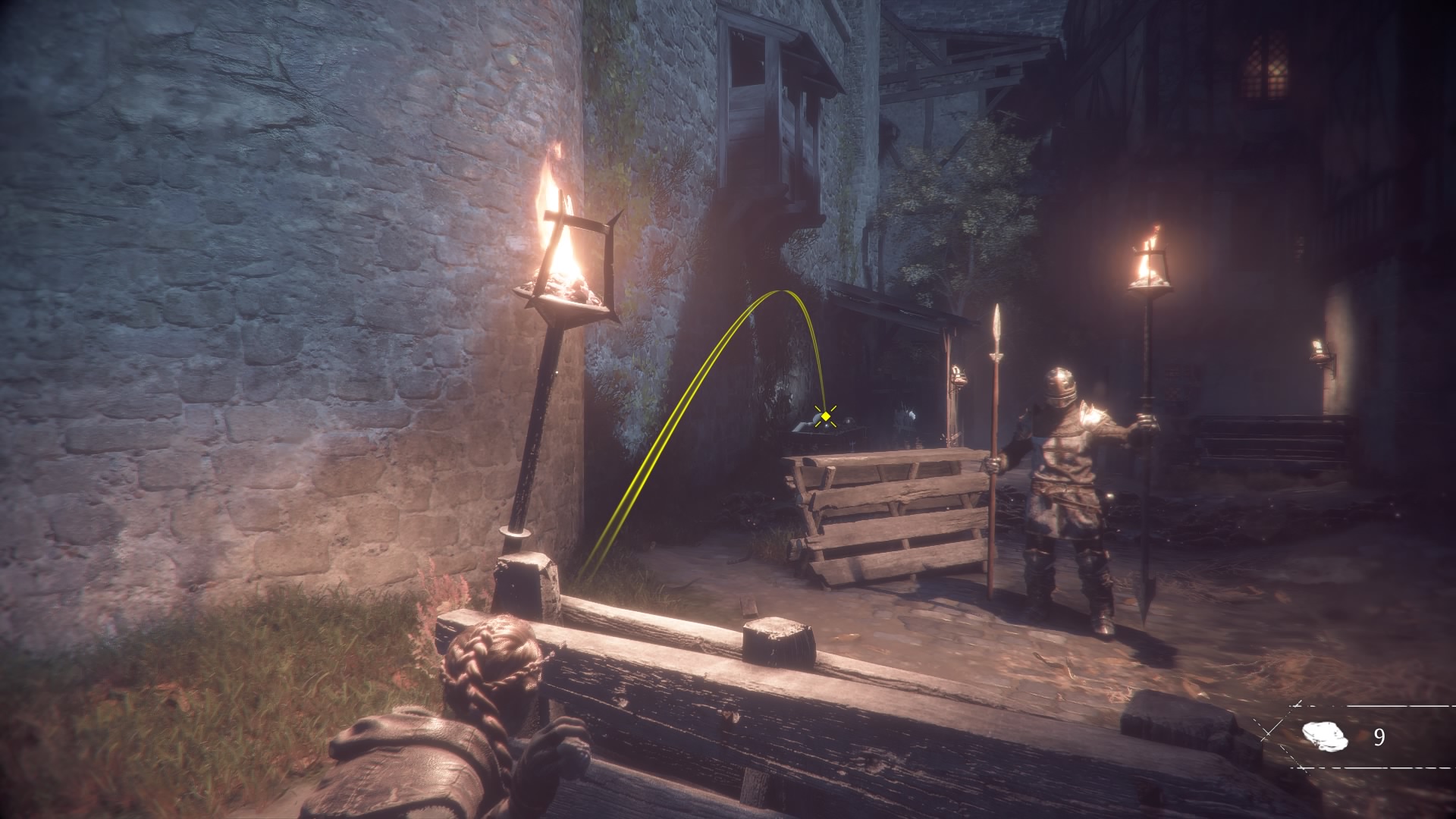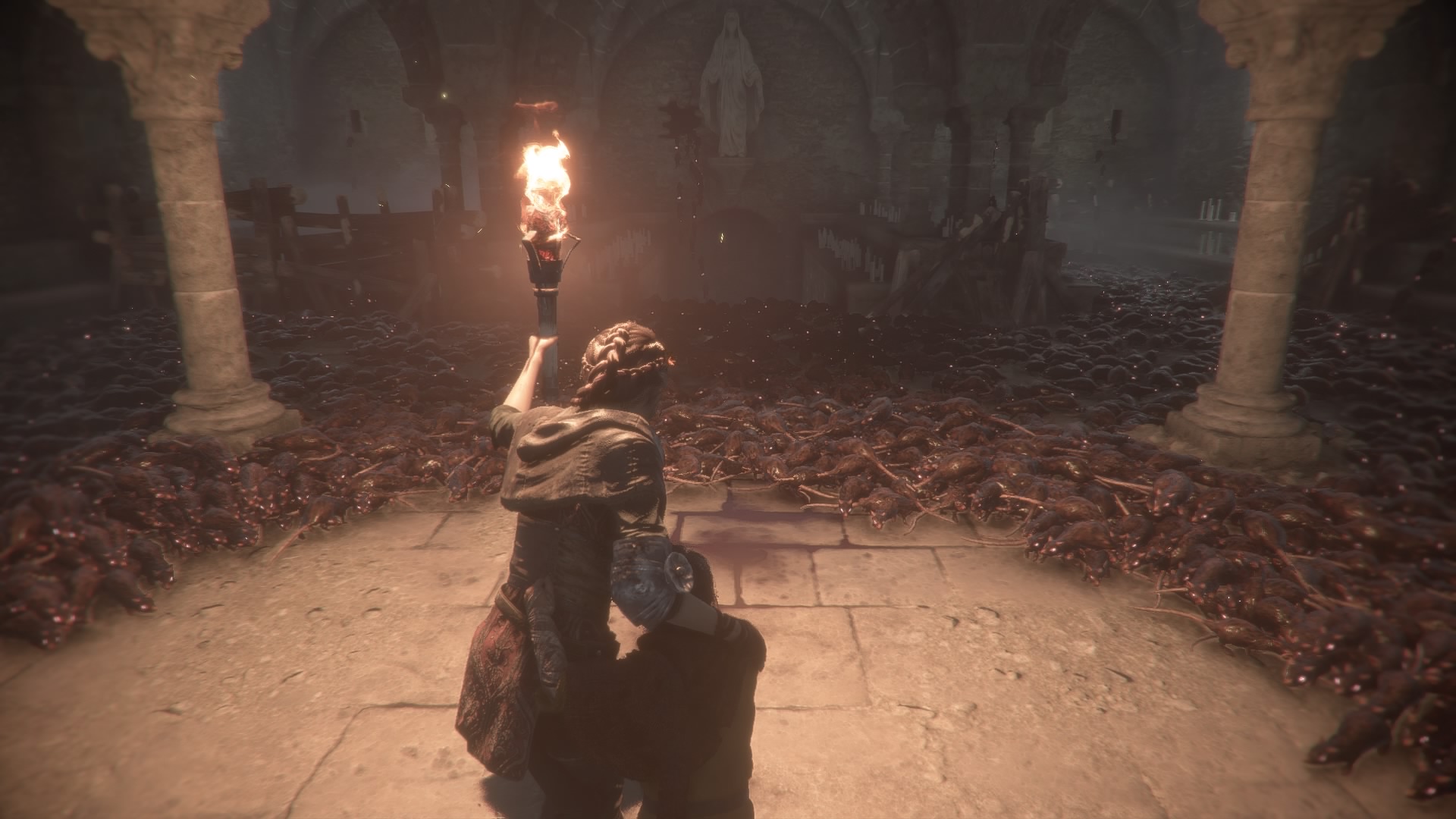Our Verdict
Visually beautiful and emotionally affecting thanks to strong characters, A Plague Tale suffers from missing gameplay variety and tonal inconsistencies.
PC Gamer's got your back
What is it? A stealth action-adventure about two kids on the run.
Expect to pay: $45/£40
Developer: Asobo Studio
Publisher: Focus Interactive
Reviewed on: Core i5-8400, GTX 1060, 16 GB RAM
Multiplayer? No
Link: Official site
On a lovely afternoon in autumn, Amicia De Rune is out on a hunt with her father and the family dog, a scene so warm and tranquil you just now things are going to go very wrong very soon. That doesn’t make it any less shocking when Amicia suddenly comes face to face with the Plague, which manifests itself not only as a horrible disease, but as a teeming mass of rats that devours everything in its wake.
Amicia and her father make their way home, only to find the Inquisition at their doorstep. For reasons unknown they want Amicia’s little brother Hugo and are not above slaughtering their way through to him. Due to an illness, the small Hugo’s lived a completely sheltered life and is basically a stranger to his sister, but in the face of death it’s her task to protect him at all costs. A Plague Tale starts off strong with a completely heartrending intro to the linear stealth action-adventure that sees the siblings sneak their way through the family estate while inquisition soldiers make short work of their loved ones.
It’s also an effective introduction to your tools and responsibilities: as Amicia you keep Hugo close during sneaking passages, not letting go of his hand unless absolutely necessary and shielding him from the most gruesome sights. If there’s climbing to be done, Hugo goes up and over first, and he helps open new passages by squeezing through openings his sister won’t fit. Amicia’s sling is a multipurpose item that can be used to distract soldiers by throwing stones at nearby metal items or destroy simple fastenings of draw bridges and the like.
Soon the children make it to a small town. It’s here that not only the plague’s full extent becomes obvious, but also how woefully underprepared Amicia is to take care of a child she hardly knows and who’s fussing about wanting to return home. Hugo’s disobedience is an absolutely realistic source of frustration throughout the game, and a lot of Amicia’s character growth comes from how she handles it. Only a child herself, she can get it wrong and lose her patience, but in consistently strong dialogue she tries her best time and again to impress the seriousness of their situation onto Hugo.
Unfortunately your actions in Plague Tale for the most part don’t support the oppressive atmosphere the narrative builds, mostly because it’s a game that isn’t challenging to begin with, progressively only becomes easier and eventually almost callous. The first time you have to use violence, face a giant swarm of rats or see a pile of dead bodies all feel momentous, until all of these things turn into business as usual.
You start with nothing but your sling and a few stones, which you can use to down enemies that don’t wear helmets. Over time your arsenal grows, thanks to a number of alchemy recipes that allow you to craft bombs, sleeping draughts and rat bait. In theory this should make for a wealth of options in how to get rid of or around enemies, but Plague Tale always strongly communicates the preferred solution, either by placing specific alchemy ingredients nearby or by literally having your companion tell you what to do.

While your options grow, the number of enemy types doesn’t, and towards the middle of the game you’ve seen and fought the same handful of soldiers slowly walking their predetermined routes so often that things feel repetitive rather than threatening. Rats too turn from a horrifying force to a mere annoyance as you gain more and more ways to work around them using light or tasty soldier corpses.
The amount of violence on display also eventually poses a tonal problem—it’s difficult to believe Amicia to be truly haunted by what she’s doing when’s she’s also dropping chandeliers on people’s heads. The siblings and the friends they make along the way provide an interesting perspective on the many horrors of the 14th century and their evolving relationships with each other are A Plague tale’s great draw, but the plot taking a bizarre towards the end makes a for a botched landing at the last minute.
Visually beautiful and emotionally affecting thanks to strong characters, A Plague Tale suffers from missing gameplay variety and tonal inconsistencies.


